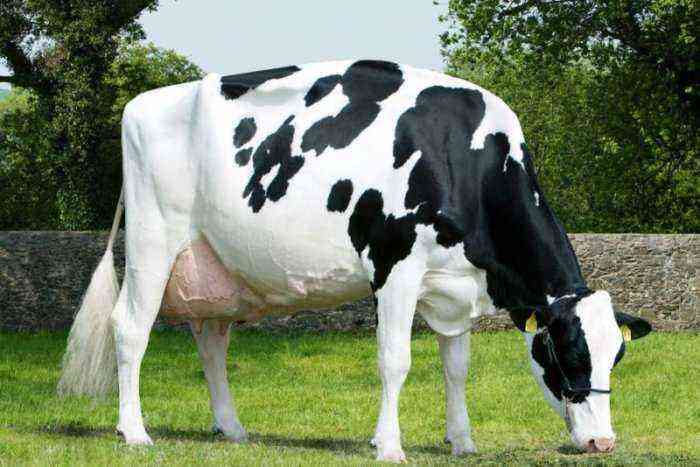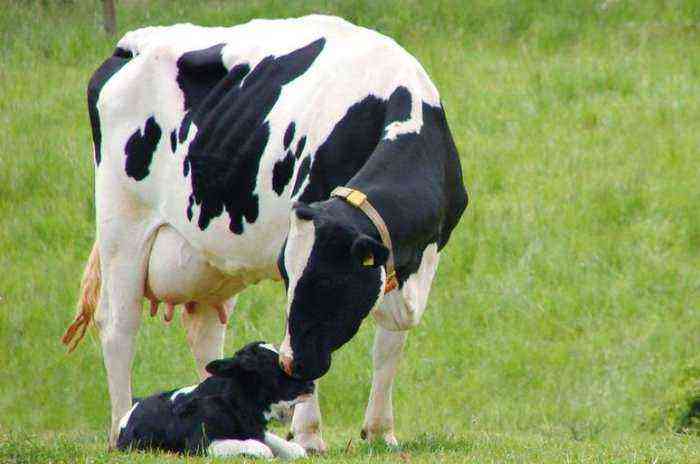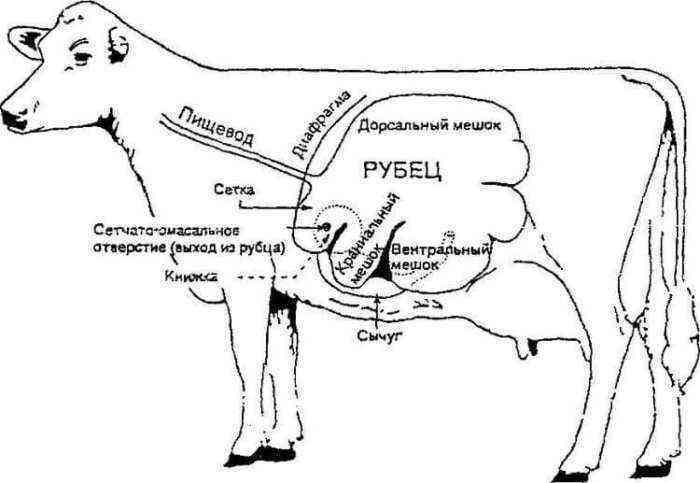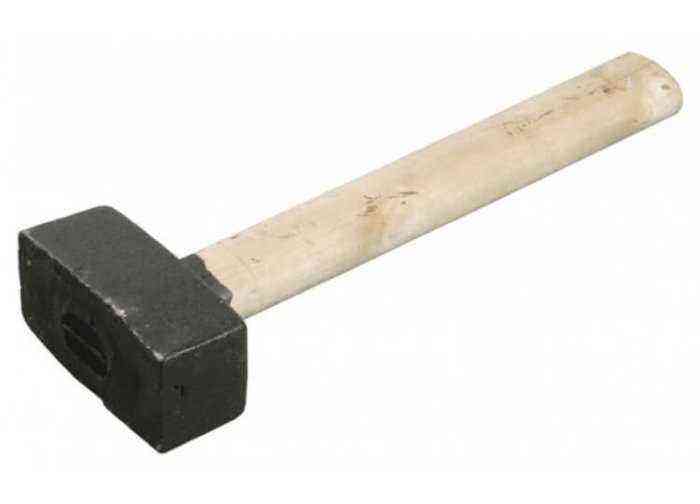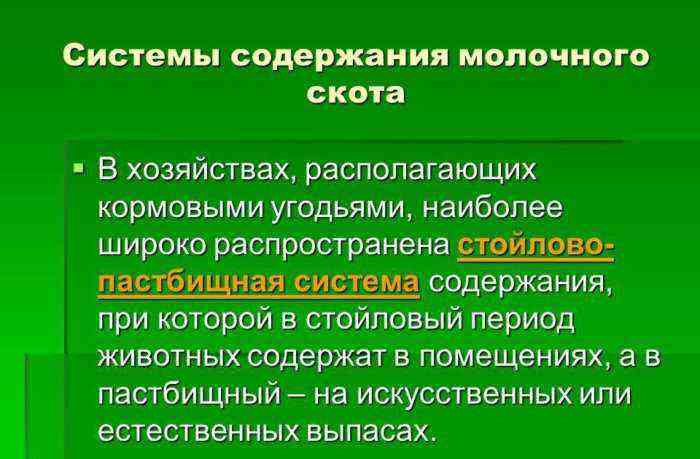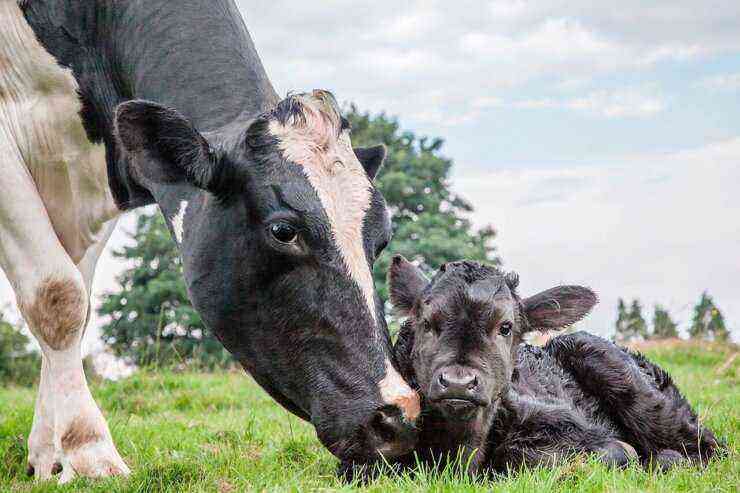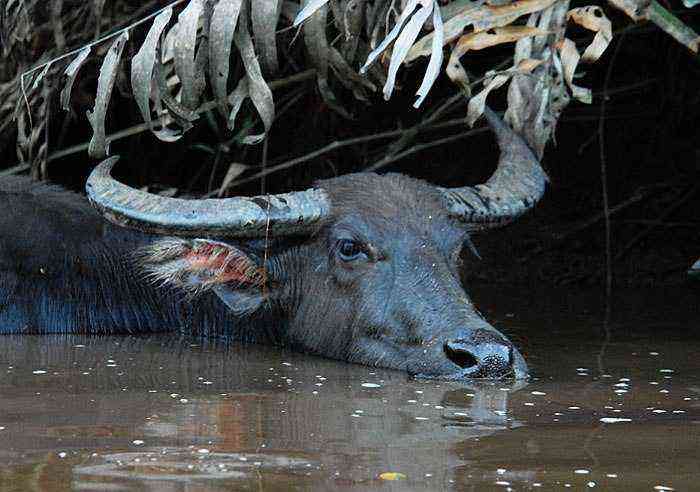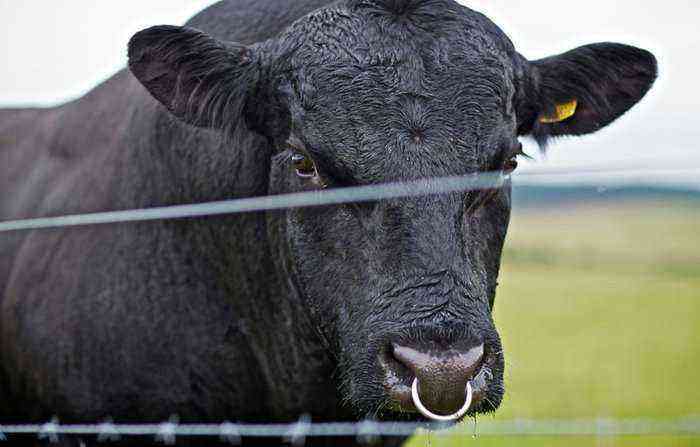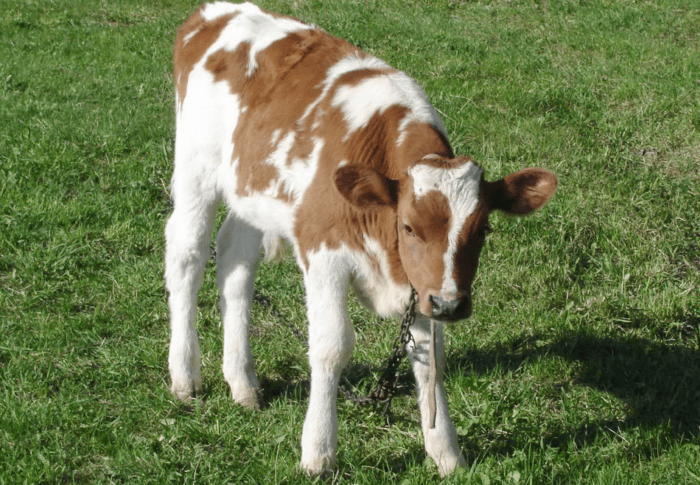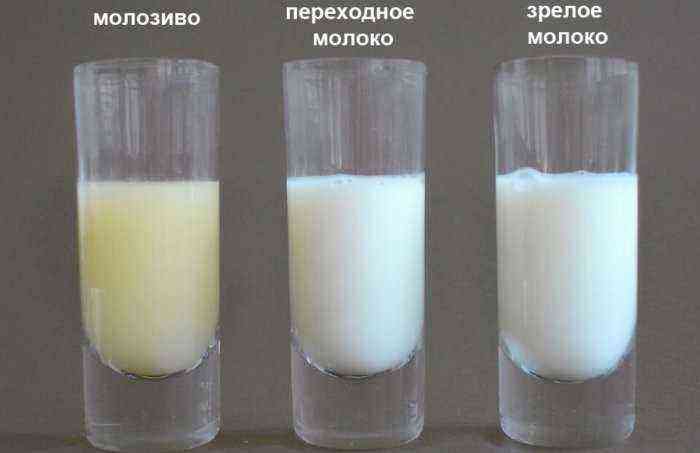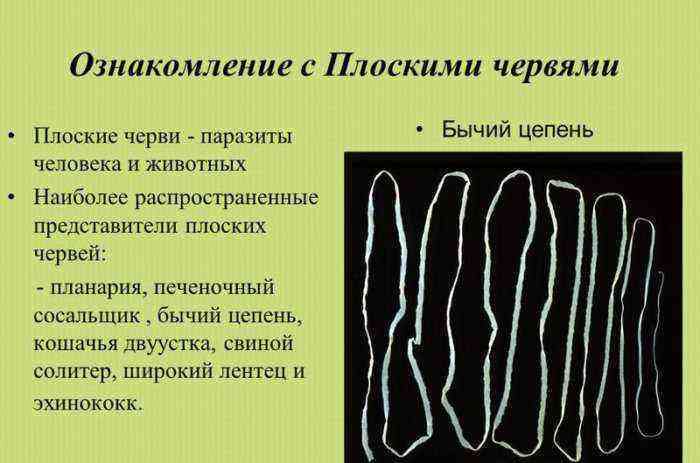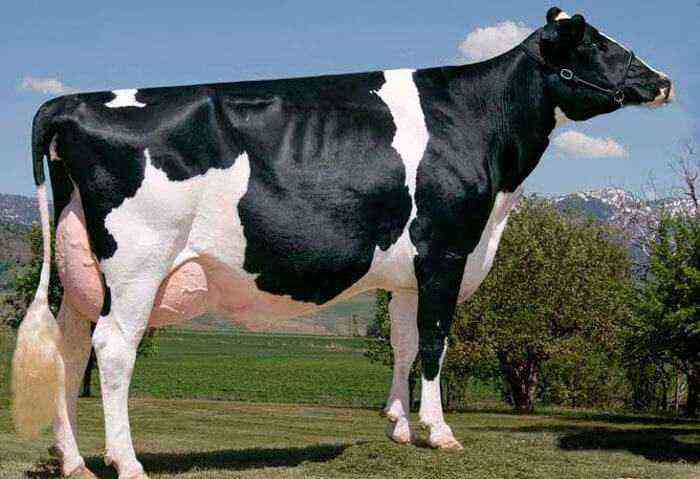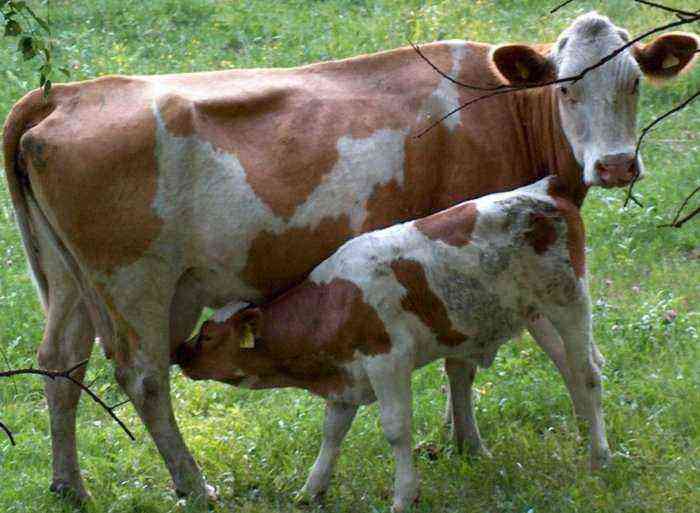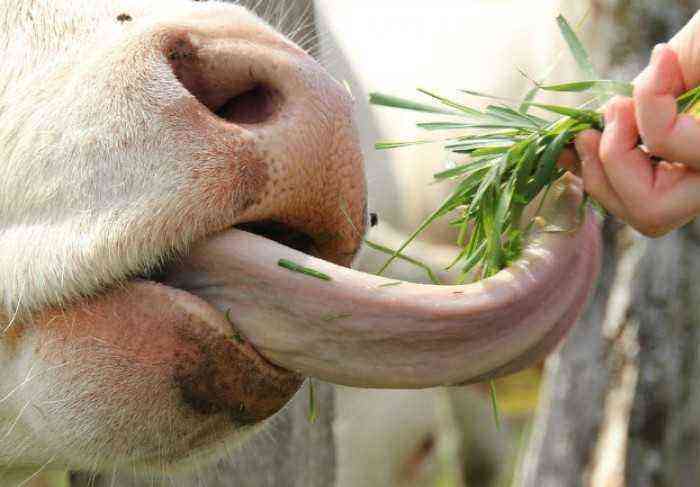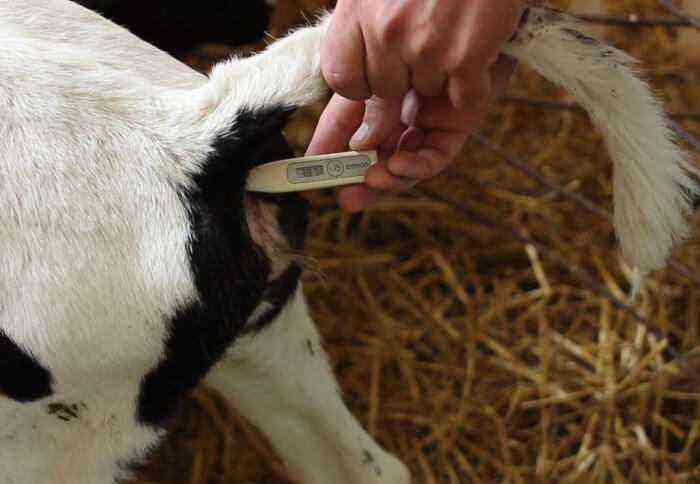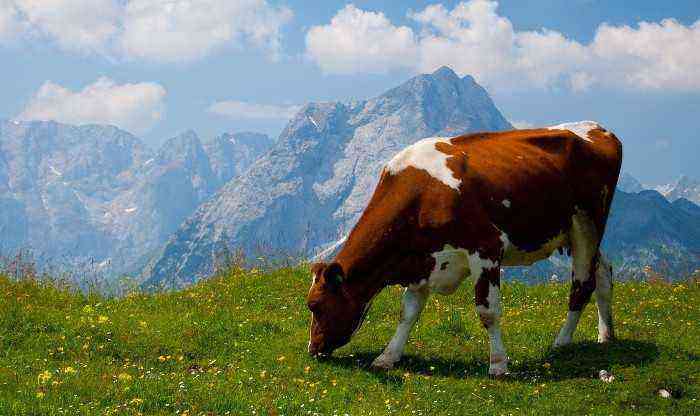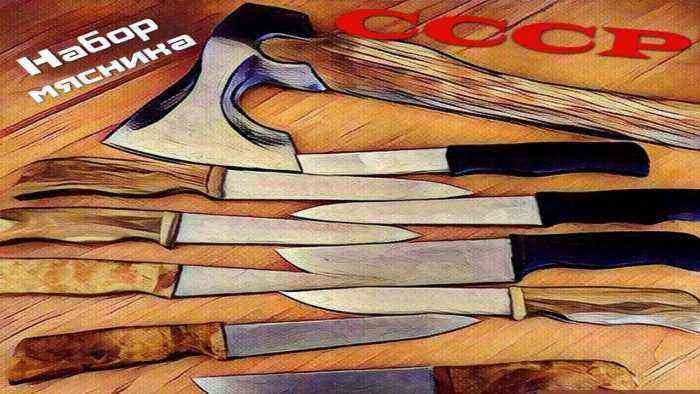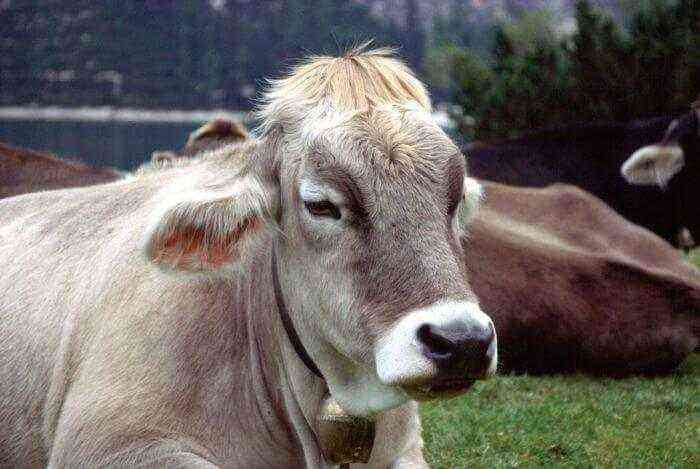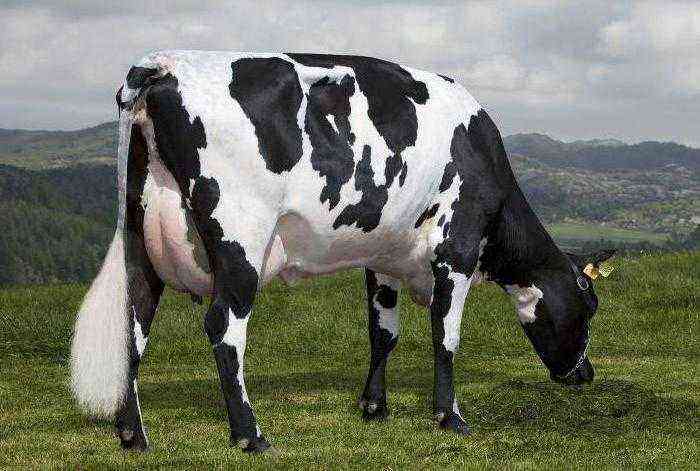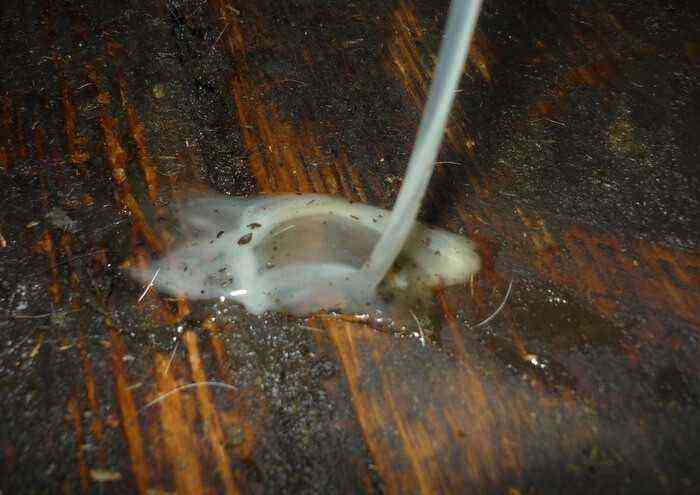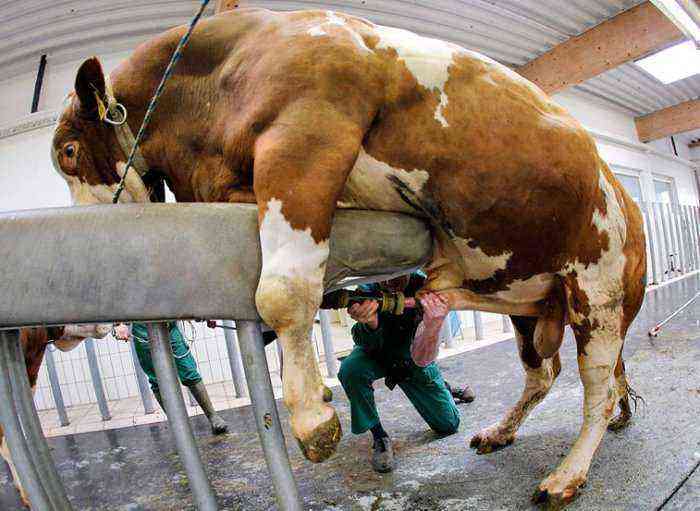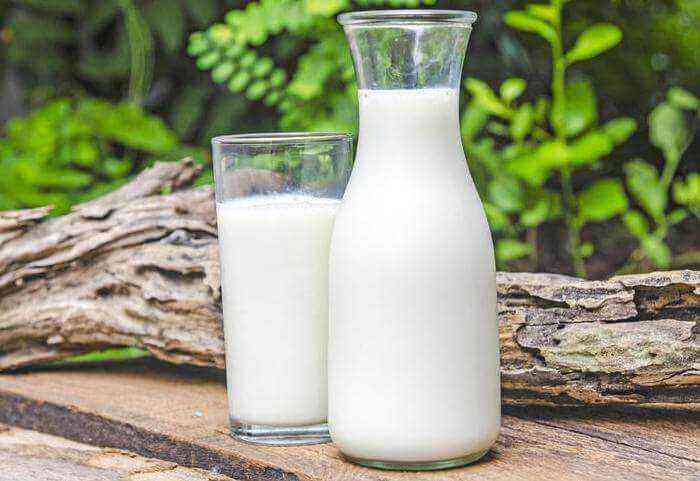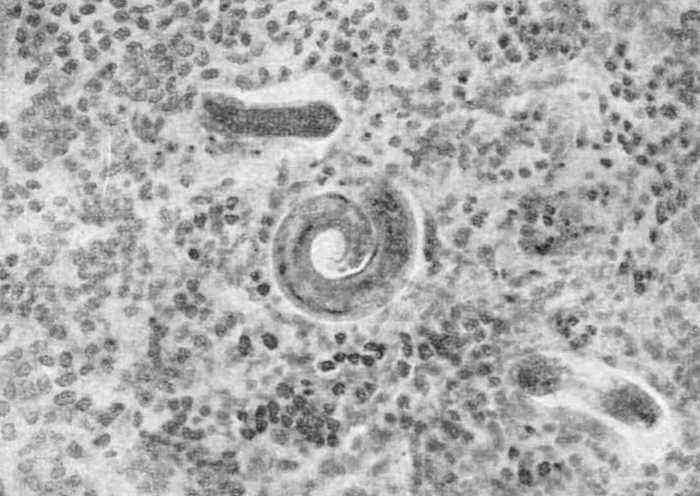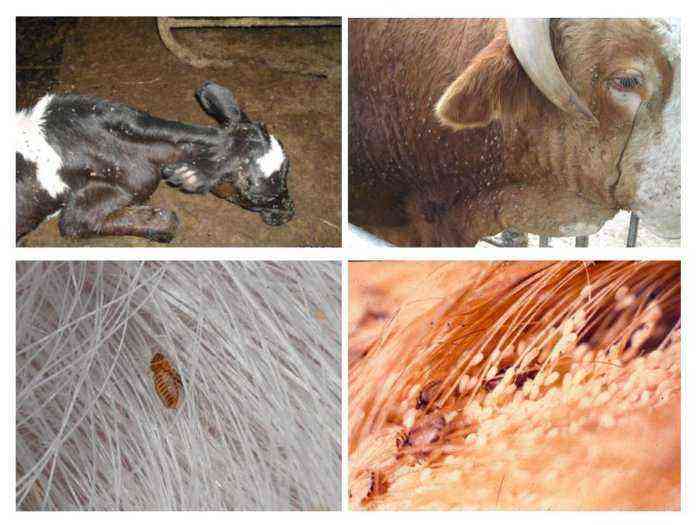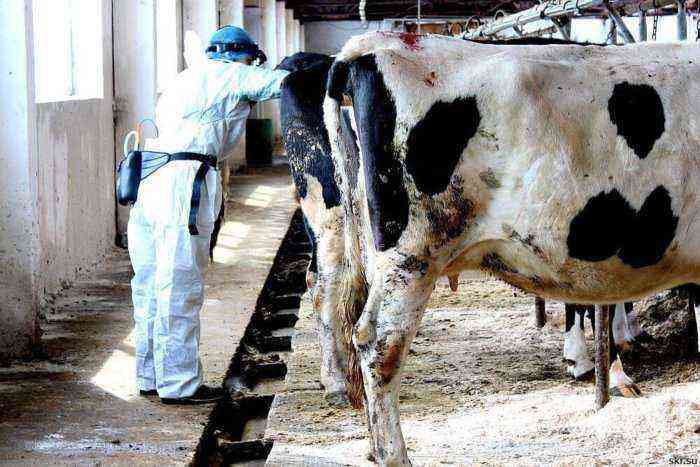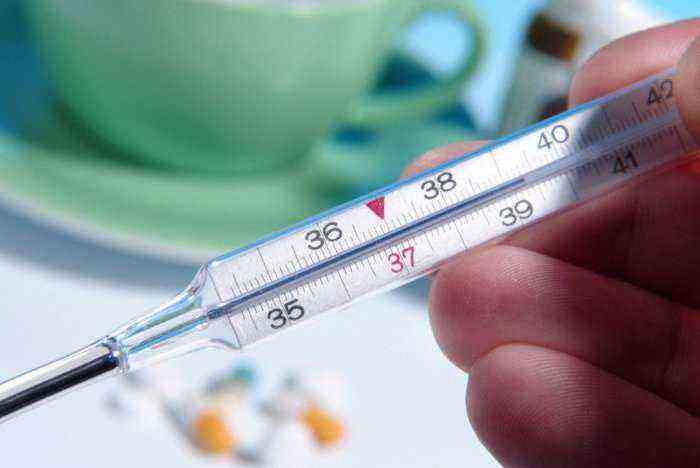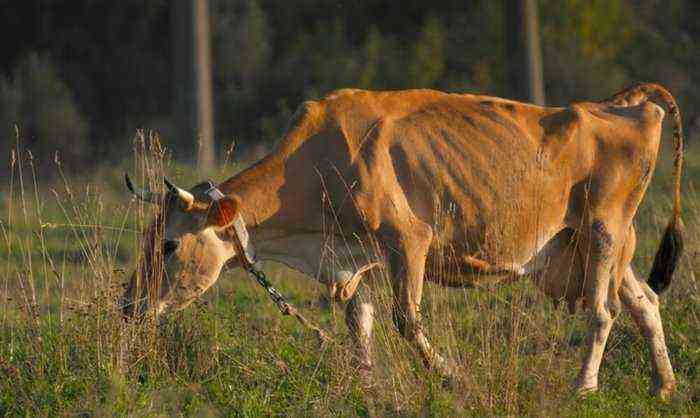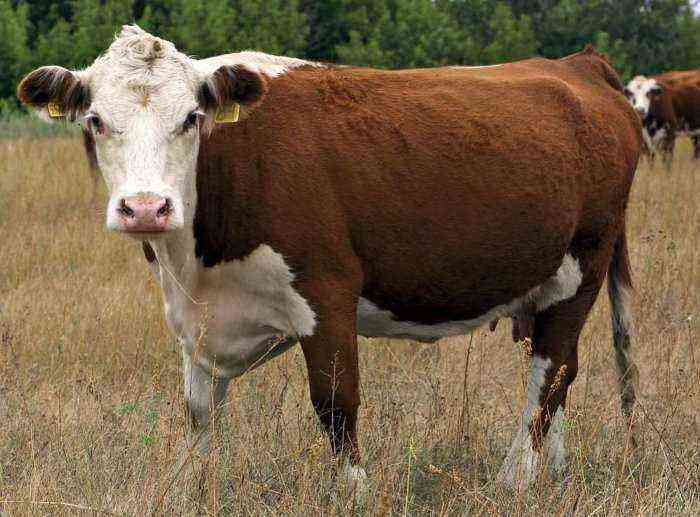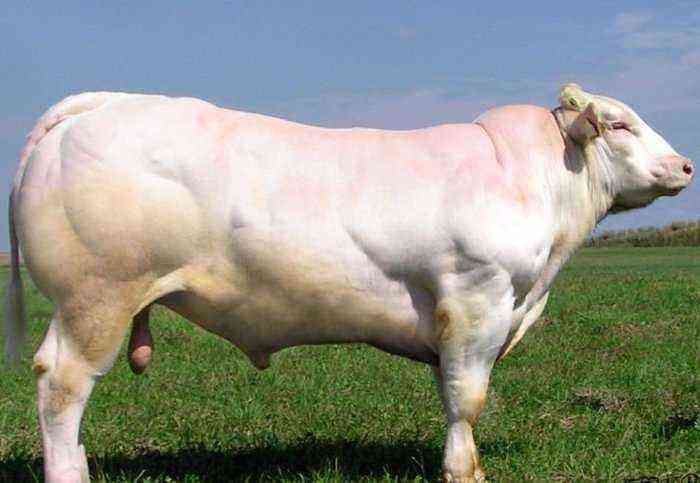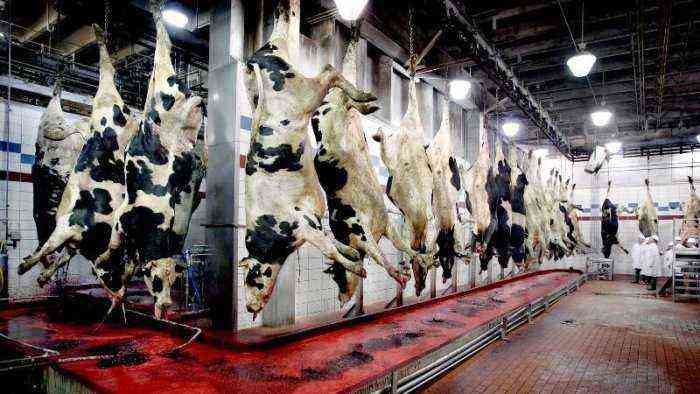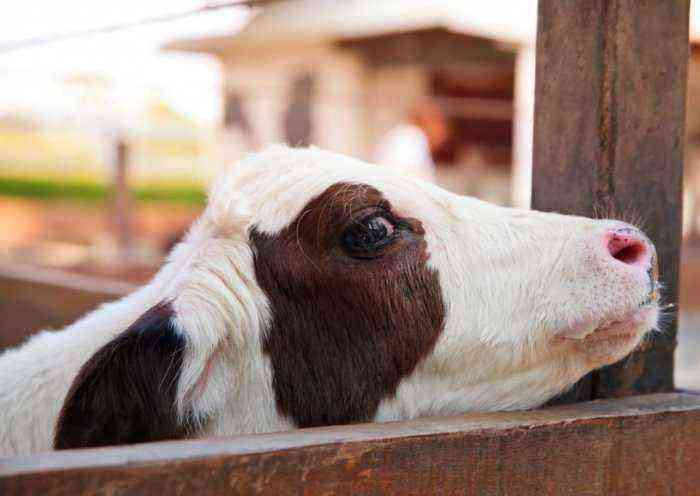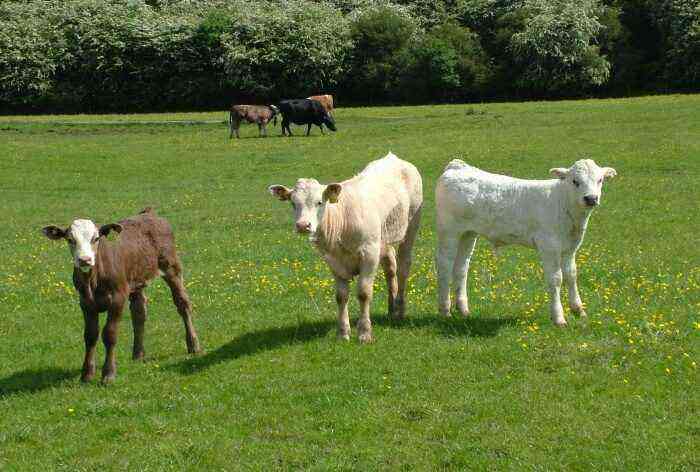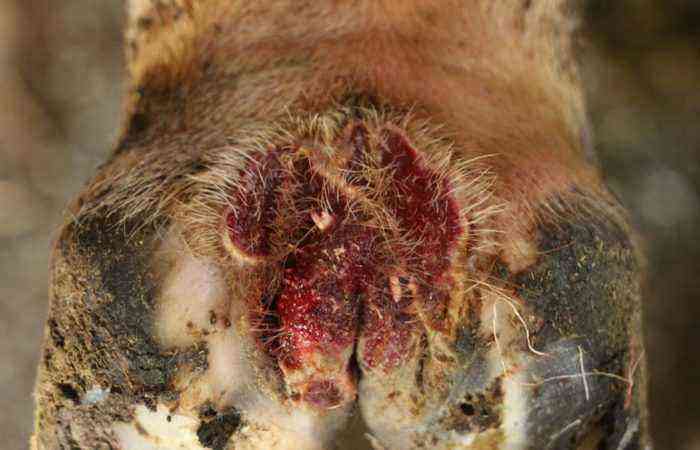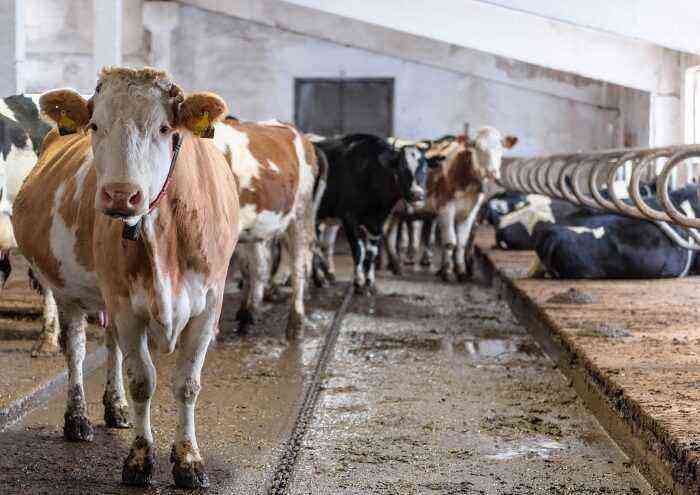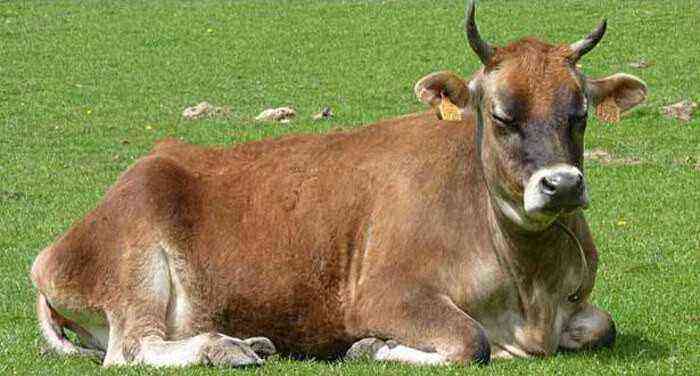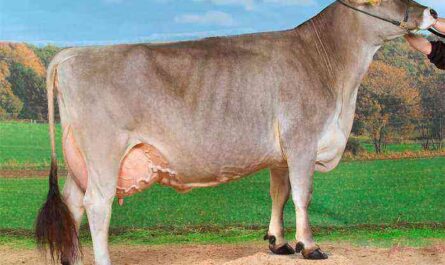Each farm animal assumes an individual structure and specifics of the functioning of the digestive system. In cattle, it is designed to consume and quickly process large amounts of grass. And in this process, the role of the jaws is more in cutting grass stems than in chewing them. Accordingly, the cow’s teeth are placed in such a way as to best meet this task.
Cow’s teeth
The structure of the teeth of a cow
At calving, a cow gives birth to a calf already with two pairs of milk teeth. Over the next 7-8 days, they are supplemented with 4 more incisors. Further, after another week, a pair of molars appears. The posterior molars begin to appear on the 4th month after the birth of the calf. After another 2-4 months, the first pair of rear molars is supplemented by the second. At this rate, by the age of 2, the entire set of milk teeth is replaced by strong permanent ones.
In total, the jaw of a calf has 20 teeth. In an adult cow, their number increases to 32. Among them are incisors, molars (molars), premolars. There are only 8 incisors in a cow. Their structure suggests the following points:
- The basis of the tooth is a yellow bone – dentin. It is a crown that protrudes above the gum. From above, the bone part is covered with white enamel.
- Under the dentin are blood vessels and nerve endings. This area is called the cavity of the tooth.
- The upper part (crown) passes into the root, which is located in the cavity of the jawbone (alveolus). At the end of the root is the beginning of the dental canal, a special opening through which blood vessels and nerves enter the tooth. The root is connected to the crown through the neck of the tooth.
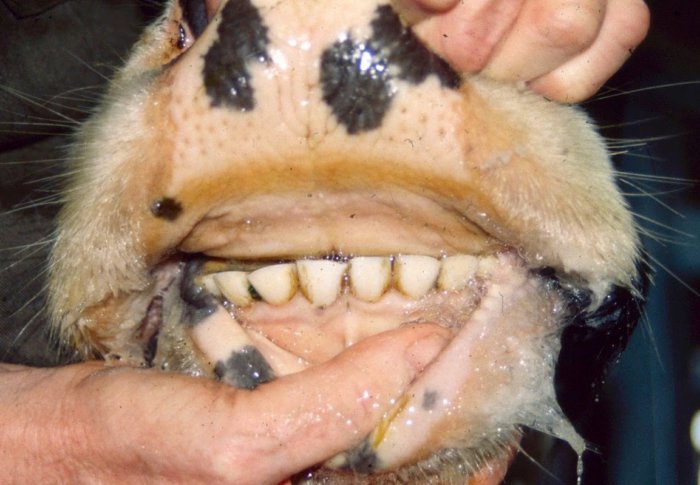
cow jaw
The molars are slightly different from the incisors. Their main differences include:
- The absence of a neck. The crown immediately passes into the root.
- The cavity with the pulp and blood vessels is located not under the dentin, but inside it.
- The bone tissue and crown enamel in such teeth are supplemented with a layer of bone cement, which makes the teeth stronger.
Reference. There are 24 molars in cattle in total. They are responsible for chewing food.
Are there upper teeth?
All incisors and molars in cattle are arranged in arcades (rows). On the sides of the jaw in its final part are 6 molars. Of these, 3 are located on the lower arcade, 3 grow from the upper one. The molars are followed by 6 premolars. They are arranged in the same way.
It is worth noting that the molars of a cow have a rather specific shape. They are slightly beveled in relation to each other. In this case, the beveled part of the upper row is pressed against the outer part of the lower one during chewing. This is what contributes to the fact that, while chewing food, the cow moves its jaw mainly from side to side.
After the lower arcades of the molars, there are small “spans” on the elongated jaw of the animal, and after them there are 8 lower incisors. But an adult cow does not have upper incisor teeth. The calf has them, but after the change of milk teeth to permanent ones, they are replaced by a solid dental cushion. At the heart of this element of the jaw is the bone, on top of which the gum is located. The upper gum tissue hardens over time, which prevents damage. The tooth pad, like the incisor teeth themselves, is beveled slightly forward, making it easier to grab food.
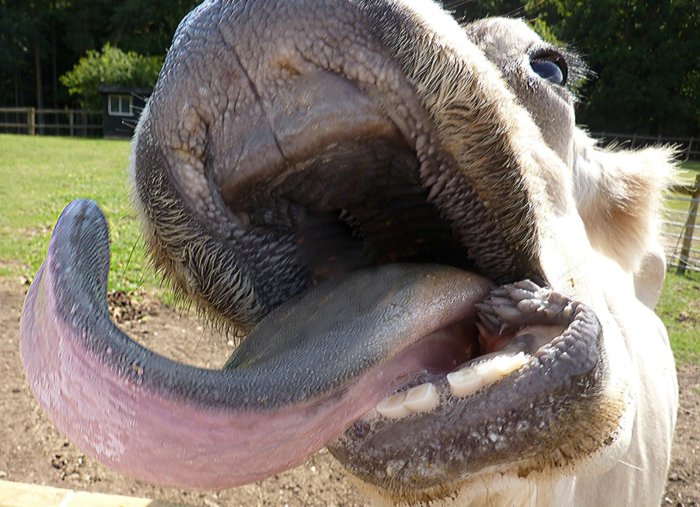
Cow’s teeth
Although cattle have incisors, they are not at all adapted for chewing food. When the animal grazes, it grabs the stems with its incisors and presses it tightly against the tooth pad, after which it plucks the greens.
Symptoms of zuboron disease
It is worth noting that the change of the upper incisors in a cow to a dental pillow is commonly called a bison. This process can be traced in cattle at about the age of 2,5 years. This procedure can last for an animal for a long time, therefore, in most cases, it passes for him without any special complications and stress. But in some cases, nevertheless, there are problems with the change of teeth, and here the cow may need help.
The main symptoms of the beginning of such a process include the following:
- a strong secretion of saliva begins, which drips from the edge of the mouth;
- teeth stagger on tactile contact;
- milk yields are reduced in comparison with the usual norm;
- outwardly, you can see that the scar is reduced much more slowly;
- the cow prefers soft feed and slurry, completely ignoring solid food;
- in the behavior of the animal, there is a decrease in activity, and in some cases, appetite;
- Lost teeth can be found next to an animal in a stall or pasture.

Signs of a bison
If some of the symptoms are still identified, you should immediately strengthen the supervision of the animal. Such changes in the structure of the jaw can cause an increased load on the digestive organs in a cow, which will further affect its condition.
In some cases, supplementing the diet with minerals and vitamins can contribute to an easier passage of the process. In this case, chalk, table salt, vitamin complexes (especially vitamin D), bone, meat and fish meal should be mixed into the feed. They will help strengthen the bones of the animal.
Also for the winter period, part of the roughage can be replaced with steamed hay, which is carefully crushed before that. If the condition of the animal has deteriorated significantly, it is better to seek help from a veterinarian. He will prescribe medications that will facilitate the process.
Conclusion
Any breeder should clearly know the specifics of the structure, functioning and changes in the jaw of an animal with age. This will allow you to more accurately select the diet, as well as preserve the teeth and health of the entire livestock for many years.
